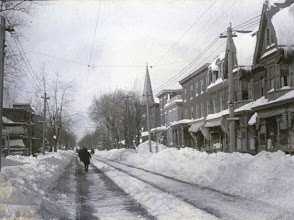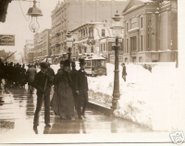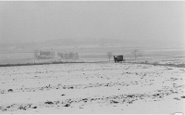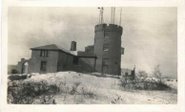Winter '11 / '12 - Great Appalachian Storm of 1950

Kevin Myatt at the Roanoke Times reminds us of a blockbuster snow storm from a Thanksgiving weekend long ago.
Known at the time as 'The Storm of the Century' ... Miller 'B' cyclogenesis occurred along shore of the Carolinas on the 24th ... rapidly deepened (26mb / 12hrs) over the Chesapeake Bay / Delmarva on the 25th...then became trapped beneath a strong 1042 mb blocking HIGH to its north.
Kevin notes...
"The Great Appalachian Storm of 1950 left behind 9 inches of snow in Roanoke and 14inches in Wytheville, with 4 to 12 inches common across our region (ED: SW VA).Some other interesting minutia about this historic early season snow storm...
"But it was far worse elsewhere. Parts of West Virginia, eastern Kentucky and western Pennsylvania saw 2 to 4 feet of snow. Winds topped 100mph in New York. The storm is blamed for more than 300 deaths and about 1million people cut off from electricity."
Snowfall totals...
Youngstown...OH - 29"
Pittsburg...PA - 30"
Elkins...WV - 34"
Notable wind gusts were observed at...
Newark (EWR)...NJ - 108 mph
Bear Mountain (N of NYC) - 140 mph
Concord (CON)...NH - 110 mph
Mount Washington (MWN)...NH - 160 mph
Other storm effects...
- Coastal flooding breached dikes and flooded runways at LaGuardia Airport in New York.
- Crop damage and record minimum temperatures in the deep south (Birmingham: 5°F; Atlanta: 3°F; Nashville: -1°F)
- Some coastal areas in New England reported greater damage than the famed '38 hurricane.
- "...(T)he Ohio State-Michigan football game went on as scheduled (in Columbus), despite blizzard conditions. Nearly 50,000 fans showed up to watch the “Blizzard Bowl,” with a Rose Bowl berth the payoff. Michigan won the game 9–3 without making a single first down and only gaining 27 yards on offense." (Weatherwise Mar-Apr 2011)
Charts and graphs after the jump.








































